So you decided to start your own blog? Great! Before you can really get going, you need to decide what blogging platform you want to use to make money with. In this article I’ll compare 7 of the largest blogging platforms you can use to make money with.
Table of Contents
What is a blogging platform?
It’s basically web based software that allows you to write articles and publish them online. Any blogging platform will allow you to publish your articles. Add media (images, video, etc) to it. Customize the way it looks by offering different free and paid themes.
Blogging and web hosting
Some blogs are only hosted by the platform itself. Others you can choose your own hosting. In this tutorial I mention a couple of blogging platforms which don’t allow you to host it yourself. It’s proprietary software that’s not open source. Wix, Tumblr, Weebly and Medium are platforms that only allow you to publish content on their platform.
WordPress, Joomla and Drupal allow you to download the (open source) software and host it on your own web server. This gives you a lot more freedom and doesn’t create a vendor lock in. You can move your data to another web host or download all your content and start again on another blogging platform if you wanted to.
Introduction to the 7 blogging platforms
I’ll first give a short introduction of all the different platforms. Once you’ve gotten to know all of them, I’ll zoom in and tell you what platforms are best to make money with.
- WordPress
- Joomla
- Drupal
- Tumblr
- Medium
- Weebly
- Wix
1. WordPress
Not many people know this but the biggest blogging platform in the world is split in two. You have WordPress.org and WordPress.com.
WordPress.org is the foundation that “invented” WordPress. You can download a free version of WordPress via that domain and run it on your own web server. You can also run WordPress on a paid webhost like Bluehost. Whether you run it on a webhosting you’re already renting or you get a new hosting package: it’s gonna cost you!

If you don’t want to pay anything for your blog, you should go to WordPress.com. There you can start your own blog, for free.
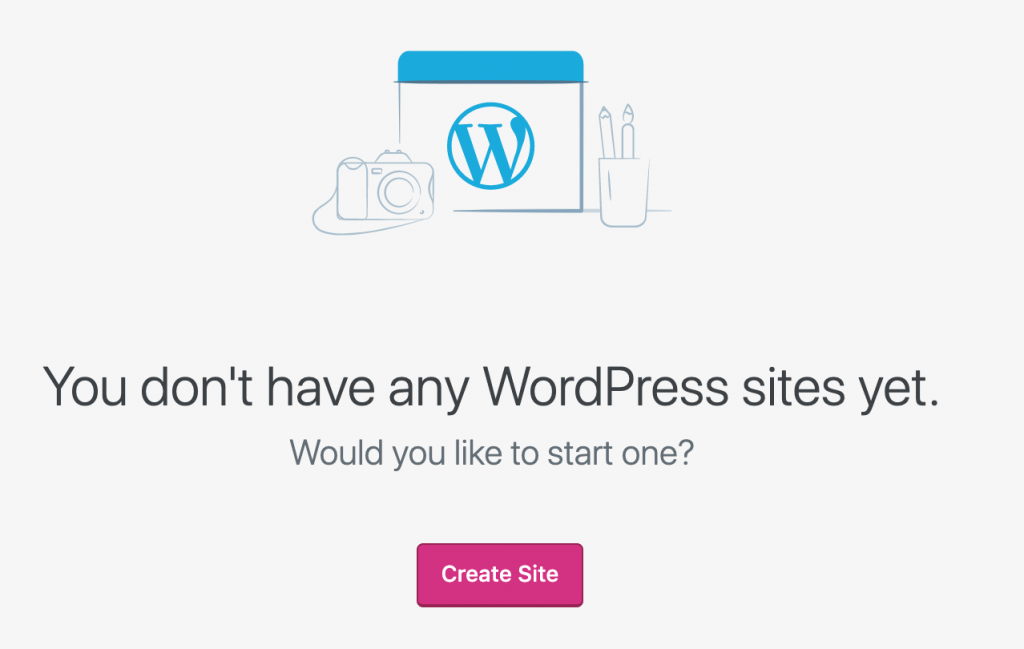
The downside of the free version is that you get a subdomain on wordpress.com like yourname.wordpress.com. You don’t get your own domain name like yourname.com. You can of course have your own domain name, but that isn’t free.
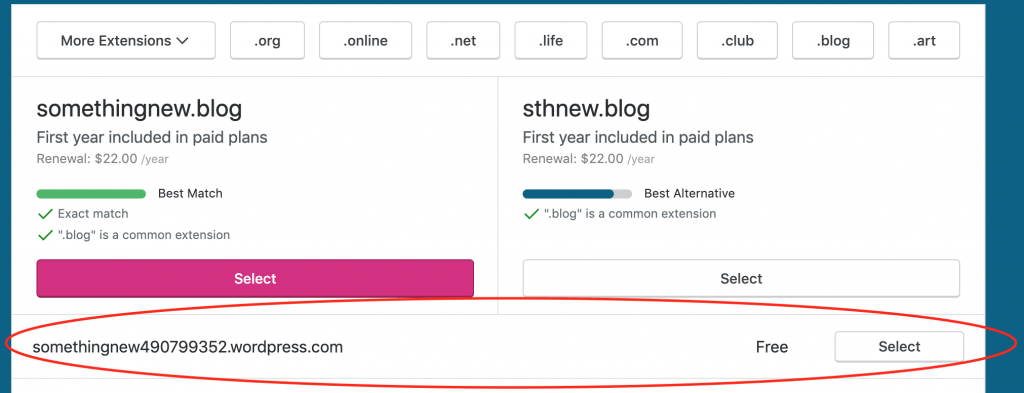
If you’re just testing the water you should use WordPress.com. It’s free. You can have a look how it works. Play around with it. Find out if blogging is something for you.
2. Joomla
Joomla used to be a pretty popular blogging platform. It’s an open source free to use platform.

Joomla has been downloaded over a 100 million times in the past decade. I’ve used them only a few times as a blogging platform. It’s a little bit more advanced than WordPress. If you’re a programmer or are interested in the technicalities of blogging software, Joomla might be a good choice.
3. Drupal
Drupal has been around for quite some time. About 10 years ago it was really popular. A lot of websites used it. Somehow they missed the boat. Their developer base was too small to catch up on all the new possibilities the web gave us.

If you asked me 10 years ago I would’ve said that Drupal was a serious contender as a platform if you wanted to start a new blog. Right now, I wouldn’t start using this platform. I think it’s too complicated. Great for developers. Not so much for normal people who just want to start blogging and make money with it.
4. Tumblr
Just yesterday it was announced that Tumblr was rumoured to have been sold for 3 million Dollar to Automatic. A couple of years back Yahoo bought it for a value of more than 1 Billion Dollar. What a whopping write off that must have been.

I actually like Tumblr a lot. It’s very user friendly. You can setup your blog in seconds.
5. Medium
Medium is a little bit more of a niche platform. If you’re in the business niche (which is very broad still) Medium is a good place to start a blog.

Medium is an up and coming, already live for quite some time though. It really started taking off in 2013. It’s basically a large news website / knowledge website where everyone can post articles on. You can give the writer “claps” to show him your l0vvvv for his work.
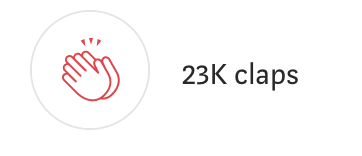
A nice way to show your appreciation. I like Medium but it’s not for every niche. Business, tech, startups, AI. That sort of stuff.
6. Weebly
Weebly was acquired a few months ago by Square. Square is the payment provider (for retail). Square acquired Weebly because they want to cross a bridge between the retail space and the online world.
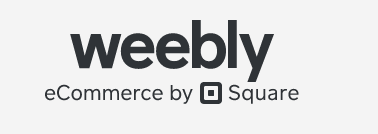
It’s free to use if you don’t run a online store on it. Great for starting out as a blogger. They also let you run your own blog on one of their subdomains. If you want your own domain prices start at around 6 Dollar per month.
7. Wix
Wix has been around for more than 10 years and keeps getting popular by the day. There user interface is very user friendly. It’s easy to start a blog.

You can use Wix for free on one of their subdomains like yoursite.wix.com. If you want a domain name you’ll need a premium plan which starts at about 5 Dollar per month.
On which platform can you make the most money?
Let’s start with the ones you can make the least amount of money with.
Or platforms that cost you the most to get up and running. I’ve mentioned this before and I’ll say it again and again:
Free comes at a cost.
Joomla & Drupal are free. Joomla doesn’t require a lot of resources to run. Drupal is a little more resource heavy if you want to cache a lot. But to get up and running with those platforms you’re going to spend a lot of time.
It takes a while to really configure the platforms and it takes even longer to really get to know them. Mastering these platforms takes months and you should be submersed in them 5 days a week or you’ll forget where all the options are.
Yes, you can look up everything online or on YouTube. But for a small business these (powerful) platforms should not be used. The cost of these free platforms is too high. It takes you too long to master them. It’s going to cost you a lot of money if you ask a consultant to help you set them up.
Weebly and Wix both offer great UX when building your blog. They don’t offer many options to customize though and you have limited storage space for images and video.
At the time of writing this blog is 3 weeks old. Contains 72,000 words of content and about 200 images. Guess how much space this takes up? 150 MB. With Wix and Weebly you get 500 MB of storage for free. So after 30 months you’ll have to upgrade.
You’ll pay 5 Dollars per month. That’s not even the worst thing because it’s not a lot of money, but it’s the scalability of the platforms that I think is the biggest problem.
Use this platform if you want a simple online store
If you want to host a (very) simple online store you can use Weebly or Wix just fine. But as you grow you’ll also want more advanced features. You want this plugin in stead of that one. You want custom code and Weebly or Wix don’t offer this.
So you’re digging yourself a hole which is hard to get out of. The longer you stay on the platform the harder it is to move to a more sustainable platform.
Tumblr is great for blogging but not for money making blogs
I like Tumblr, I really do. I think it’s more user friendly than WordPress. But you don’t own your Tumblr website. Tumblr shows ads on it. You can’t stop that. More Tumblr ads means less space for you own.
Starting in 2017 it isn’t even possible anymore to add Google Adsense to your Tumblr blog. Probably the #1 way to make money online is through Adsense. You add a small snippet of code to your website and Google automagically adds ads to your website.
It’s not possible to do it on Tumblr. Not Adsense, nor Media.net (Microsoft’s Adsense) nor any other major ad networks.
Tumblr has its own ad network and allows brands to advertise on your blog without any revenue sharing. If you just want to touch the water, see what blogging is like: Tumblr is a great way to start blogging. But not to make money with it.
Medium is a great channel to make money, if you’re a good writer
The part after if is important. If you lack the writing skills, stay off Medium.com. On Medium you get paid through claps other people give you. If they don’t like your writing skills you get no claps. No claps is no money.
You can’t make any “easy” articles littered with affiliate links, you’ll get banned. Çreate insightful pieces of content that bring real value to the readers.
You can add affiliate links to your Medium articles but you have to be a bit careful. Writing a 500 words blog with 10 links all with an affiliate tracking code won’t be accepted. Your post will just disappear into nothingness.
If you’re a good writer and writing is the only thing you want to do than I suggest you start a blog on Medium and apply for their Partner Program.
Stick to a niche. Keep writing and building content. Try to make between 3 to 5 content pieces before you start your outreach. The articles should have a minimum length of 1000 words preferably 2000 words and a minimum of 3 images.
Once you’ve created a bit of content look for other creators on Medium. Follow them. Comment on their articles. Add value to their articles.
The more followers you have the more eyeballs your articles will get and the more money you’ll make through the Medium platform.
The ultimate money making platform: WordPress
WordPress is by far the most used blogging platform (to make money) around the globe. By estimation there are around 175 millions websites online. One third of those are WordPress. Half is hosted on WordPress.com the other half is self hosted.
I would suggest to first make a WordPress.com subdomain and test the waters. See what you think. I think it’s pretty good blogging software. UX is good. Adding a post is easy. Uploading media is easy. You can just drag and drop images in content without going to an upload screen or anything like that. Hosting for WordPress is pretty cheap.
There are a lot of hosting specific tools that keep you installation up to date. Bluehost has a WordPress Hosting tool to help you manager your WordPress installation and to speed it up with caching. Siteground has the same.
The real benefit from WordPress comes from Plugins
There are tens of thousands of plugins for WordPress. Every plugin ads functionality to your basic installation. Most of them are free to use. Some of them have premiums you can buy. A lot of them are very handy to use. Let me sum up some for you:
AMP
AMP = Advanced Mobile Pages. Ever clicked on a result in Google and saw that the site loaded very quickly on your mobile device? Like instant? That’s AMP. You’re being shown a very basic version of a web page but the benefit is speed.
Google has confirmed that faster pages rank higher than slower pages. So this is a must have plugin for WordPress.
Yoast SEO Plugin
If you want to rank higher in Google you want to add the right titles and description tags to your pages. You want to get input on how well your pages are written. You want to link a lot to your cornerstone content (your most important content Google should rank the highest).
Yoast SEO Plugin helps you with all that. When you also downloaded AMP, you should also download Glue, to glue the two together.
W3 total cache
Everyone wants a quick loading website. That’s why AMP was invented. That’s also why you should use a caching plugin like W3 Total Cache.
Enable caching and the most basic minify settings. You should see a considerable improvement in Google Pagespeed.
Social sharing plugin
You can’t go without a social sharing plugin. One of the easiest ways to get more traffic is by having other people do the outreach work for you. Your readers network is infinitely bigger than yours. Make use of that by downloading Social Pug. It’s a very basic social sharing plugin that can show the number of shares on each social button. Don’t activate that yet by the way. Once you have some traction and some social shares activate it. It doesn’t really look good if you have 0 shares on every blog post right?
Think about where your audience is. If it’s not on LinkedIn, don’t show the. The smaller the number of social sharing buttons the more likely someone is to click on one of them because of the choice paradox. Making a choice is easier when you only have 3 – 5 options. If you have more you’re more inclined not to make a choice.
Click to Tweet
Are you lazy? You should be! Because lazy people are more creative. They think of more ways to make their life easier. One of those ways is Click to Tweet. A plugin that ads a box where your audience can click on to tweet. Like this:
Lazy people are more creative Share on XPeople love to tweet things that make them laugh or things that makes them look smart. So make sure you include a couple of these boxes throughout your articles to get some extra social l0vvvv.
Adsense: your first (and easiest) road to making money
Google used to have a WordPress Plugin for Adsense. That was great because it automagically placed the ads on the best performing spots. Google has not been sitting quietly in a corner and they improved their basic snippet to also have the same functionality.
So signup for Google Adsense. You can only signup if yo already have a website with a considerable amount of content. Don’t signup if you just started and still have the default “Hello Dolly” post up.
Invest a few days in creating valuable content. Only then should you signup for Adsense and have your website approved.
Once your account is activated go to Ads -> Auto ads

Click on “Setup Auto Ads” on the right.

You’ll get a piece of code that looks like this:
<script async src="https://pagead2.googlesyndication.com/pagead/js/adsbygoogle.js"></script>
<script>
(adsbygoogle = window.adsbygoogle || []).push({
google_ad_client: "ca-pub-XXXXXXXXXXXXX",
enable_page_level_ads: true
});
</script>Include this code in your theme by going to Appearance -> Theme Editor and open the header.php file on the right side of your screen.
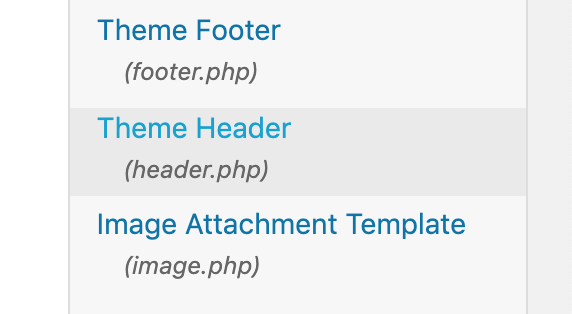
Click on your theme header and include the code between the <head> </head> element of the HTML
Just add a new line and paste it in there. Visit your website on a different browser and check your HTML code via Right click – view source to see if the code is in there.
Next up is the AMP code snippet (IF you downloaded and activated the AMP plugin). No ads will be shown on your AMP pages (so people visiting your website from a mobile phone) if you don’t also add the AMP Adsense snippet.
Click on the auto ads for amp tab.

Then go to step 2 and you’ll again get a code snippet.
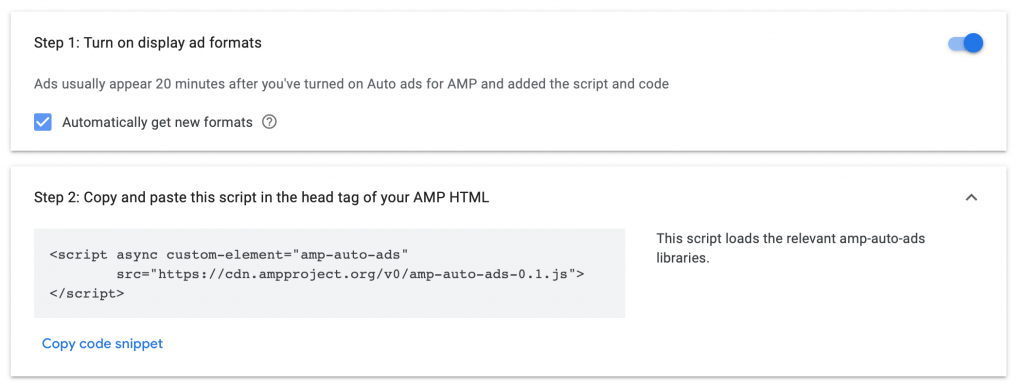
You can past this snippet immediately below the other snippet you just added.
<script async custom-element="amp-auto-ads"
src="https://cdn.ampproject.org/v0/amp-auto-ads-0.1.js">
</script>Go to step 3

Paste this code snippet in the same file but just after where you see the <body> tag.
<amp-auto-ads type="adsense"
data-ad-client="ca-pub-XXXXXXXXXXXXXX">
</amp-auto-ads>I removed my ID everywhere, so if you copy the above code(s) make sure you add your own ID to it otherwise you won’t get any ad impressions and subsequently no income.
It takes a few days for the ads to show.
In the meanwhile you have to do something else thats new for 2019. You have to add an ads.txt file to your web server with a line of text. Connect your domain to your Adsense account so Google knows your WordPress website hasn’t been hacked by someone else and they added their own Adsense code.

Download the ads.txt file and upload it to the route of your website. That’s usually the public_html folder.
Analytics is the start of your money making journey
If you haven’t already done so, signup for Google Analytics (free and extensive analytics plugin but you’re giving Google even more knowledge about the web :)) or Matomo which is a first party (self hosted) analytics plugin. That means your data, better GDPR compliance, etc.
If you installed the Yoast SEO plugin you can add your AMP analytics code via that plugin if you go to AMP -> Analytics.
Use this Google Analytics code snippet as an example but DON’T FORGET to include your own ID in it where it says GA_MEASUREMENT_ID.
<script async custom-element="amp-analytics" src="https://cdn.ampproject.org/v0/amp-analytics-0.1.js"></script>
<amp-analytics type="gtag" data-credentials="include">
<script type="application/json">
{
"vars" : {
"gtag_id": "<GA_MEASUREMENT_ID>",
"config" : {
"<GA_MEASUREMENT_ID>": { "groups": "default" }
}
}
}
</script>
</amp-analytics>Your tracking ID should look like this: UA-1234567-1
This should be enough to track your traffic on the AMP pages but you still need to add the “normal” code snippet to the same page we added the other code snippets to earlier. The header.php and also between the <head></head> tags.
Measuring and acting upon your website traffic and engagement is the road to success.
You can see what pages have the most interaction, have the most visitors. You can see what are more and less successful pages.
Best of all it makes your traffic visible if you haven’t received any blog comments or income from your blog yet but you did already spend days / weeks / months on it.
If you’re planning to do some paid outreach you can see what channels are most effective. What channels get you the most traffic for you Buck? Which ones the most engagement? The most income?
When you’re planning to add an ecommerce store to your blog you can implement Google Analytics Ecommerce tracking. Once you’ve done that you can see the value every visitor has.
Connect Google’s Search console to your analytics account. First signup foor Google Search Console. Next go to your Analytics account -> Acquisition (left menu) -> Search console. If you used the same Google Account for both services you should be able to easily validate Search Console with your analytics account (use the second option when you get the validation options in Search Console) and connect analytics.
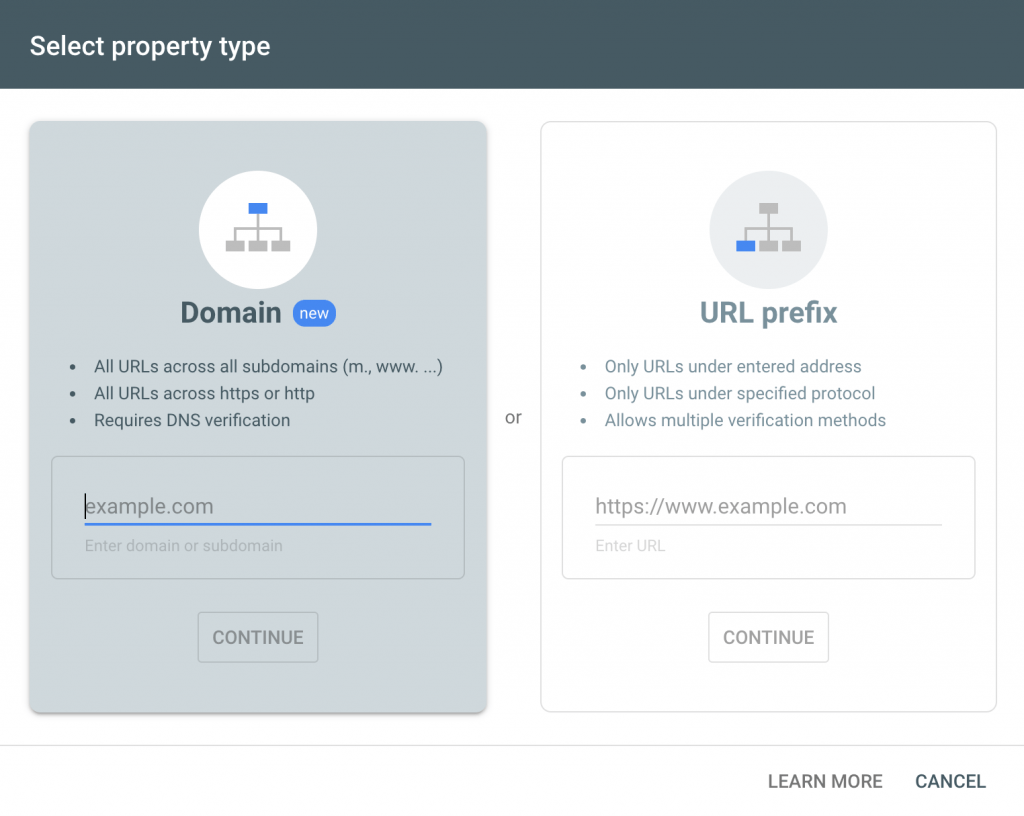
Track your rankings in search engines
I receive over 200,000 visitors per month on my various websites via Google’s Organic results. So I really depend on them income wise. Google’s Search console also shows you your rankings when you go to the performance tab. But I also find it a nice addition to track my rankings for my top keywords with Wincher. You can try it for free for 14 days. Just add all your keywords and you’ll immediately see where you’re ranking. After the trial is over it costs you 4 Dollar a month.
You can add competitors to your reports so you can see where they rank compared to you. If they rank higher you can see what page and investigate how they rank higher. Do they have better content? Do they have more links pointing to their domain / page? Use Majestic to check how many links they have pointed to their domain / page. You won’t get a lot of information if you use the free version but you’ll get a glimpse of what you need to outrank them.
The most important reason why you should use WordPress?
You’re building an asset. It’s on webhosting you control. It’s on your database. You can migrate to another hosting provider when you want. You can make backups and decide what plugins you install without paying for them on a monthly basis.
You’re not locked in to a contract where you pay more the more visitors you get or the older your domain gets. The older your website the more content you added and the paid plans from the other platforms all focus on long time users who’re not inclined to go off the platform because they’ve built a valuable asset on their platform.
In the end that’s what’s going to cost you the most money. Not being able to scale enough and create a website for your audience the way you want it.
When you have 1000 visitors a month it doesn’t really matter that not everything works how you’d like it to work. But once you get to 10,000 visitors a month or 100,000 visitors a month you want more and more control over the user experience of your visitors. You don’t want ads (on Tumblr) you don’t want to pay 50 USD extra (Weebly / Wix) because you’re succesful. You want to stay with the same host and add plugins that can help you grow your audience even more like email marketing plugins.
Having your own email marketing list is probably the second most important asset you have to build.
Once you have a bit of traction and you start to receive 100’s of visitors every month, you should focus on building an email marketing list.
People subscribe to your list for the following reasons
- For a free ebook
- To get a content upgrade (for example bonus tips on stuff they just read about)
- Because they get a discount
- They love your content
For anyone who wants to make money online your email marketing list is your lifeline to create more revenue.
It comes at very little cost. There are a lot of email marketing providers that offer their services for free (or at very low cost) if you still have a small list size. Mailchimp has a free service until you reach 2000 subscribers. Activecampaign has a 9 Dollar/month package.
Read more about email marketing here.
If you have the right hosting WordPress is lightning fast
If you host at Bluehost or Sitepoint you should be set for the fast web hosting part. Did you install the W3 total cache plugin too? If you did you have the best combination to start with your WordPress website and you should be future proof.
Go check your Google Pagespeed score and if you’re not happy with it follow my Website Optimization guide.
Weebly and Wix are fast. But they optimize all websites the same way. There’s no way you can improve the PageSpeed beyond a certain point.
This is the Google PageSpeed score on mobile from one of Wix’s users.
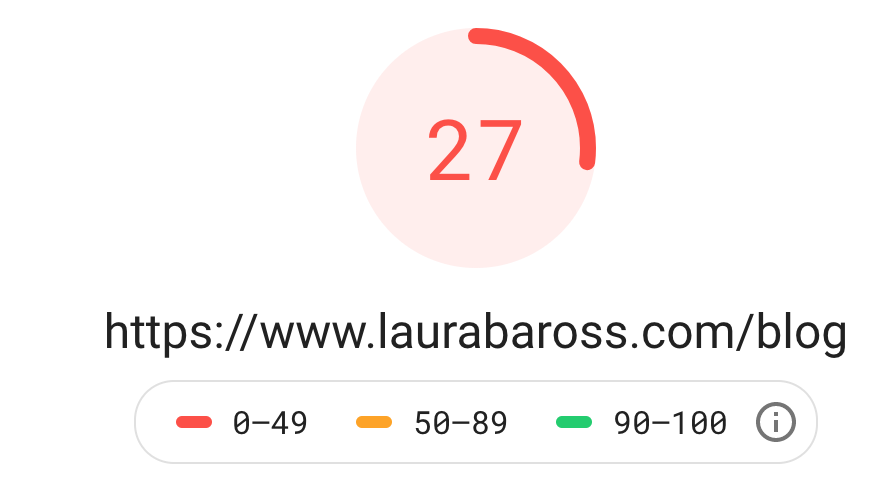
This is my score after I followed my own optimization guide.
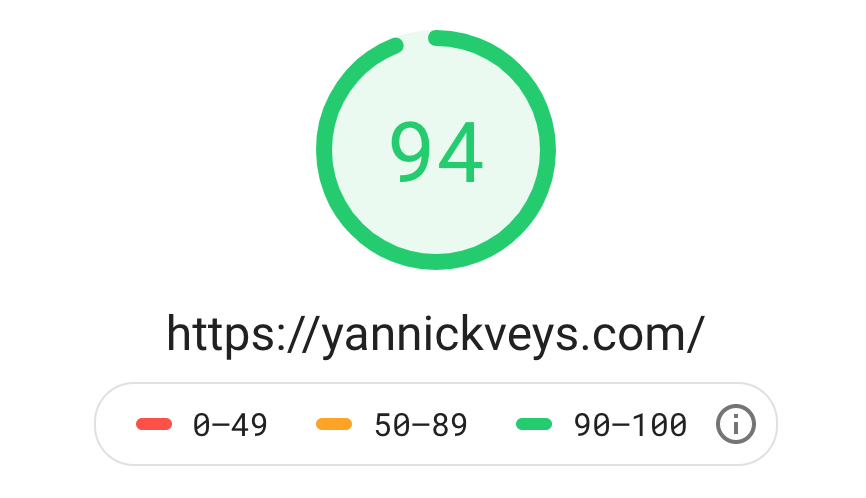
That’s quite a difference. A day and night difference I’d say. That’s because I optimize for 1 website. I don’t optimize for 100,000 websites and make concessions.
You’re totally at their mercy. If they decide to change something which affects page speed you have to cross your fingers the needle turns the right way.
You can always file a ticket to ask them to improve Page Speed but the question is how big their pile of “Stuff to do” is.
Take control of your own future and choose WordPress with your own web hosting
If you want to make money online, there’s really only one option to choose. WordPress as a platform hosted on your own web server or a web server dedicated to WordPress hosting.
You can have a go at WordPress by going to WordPress.com and trying it out. Once you have the hang of it start your own website “fo real”.
Don’t be mistaken… It will take months and months of constant work to move the needle. You won’t get rich quick and you won’t get rich on day one. But you can make money online. Lot’s of it. I’ve made over 200,000 Dollar the past few years with my websites but it has taken me a long long time to get to this point of financial freedom.
If you have any questions please leave a comment! Happy to answer!